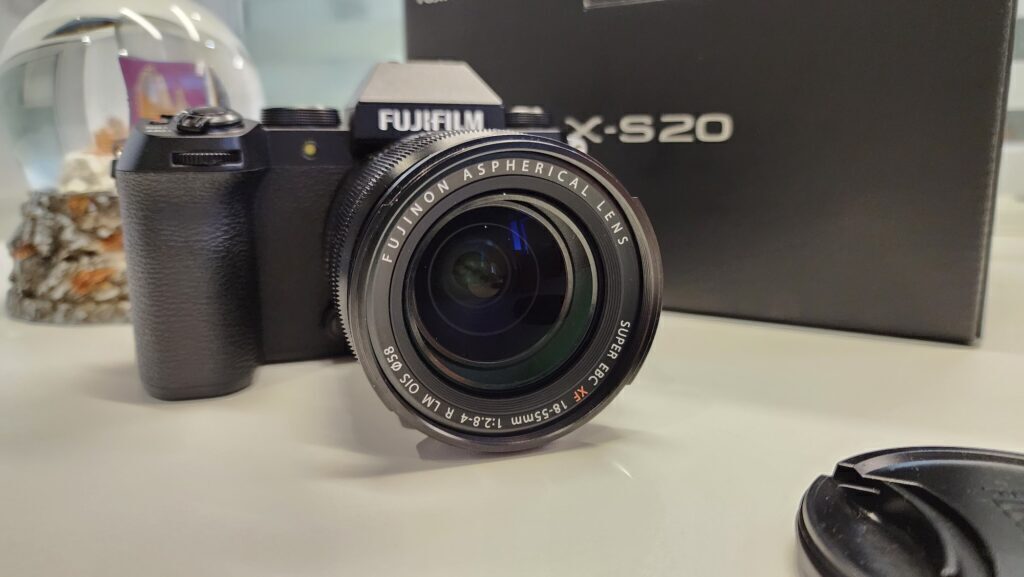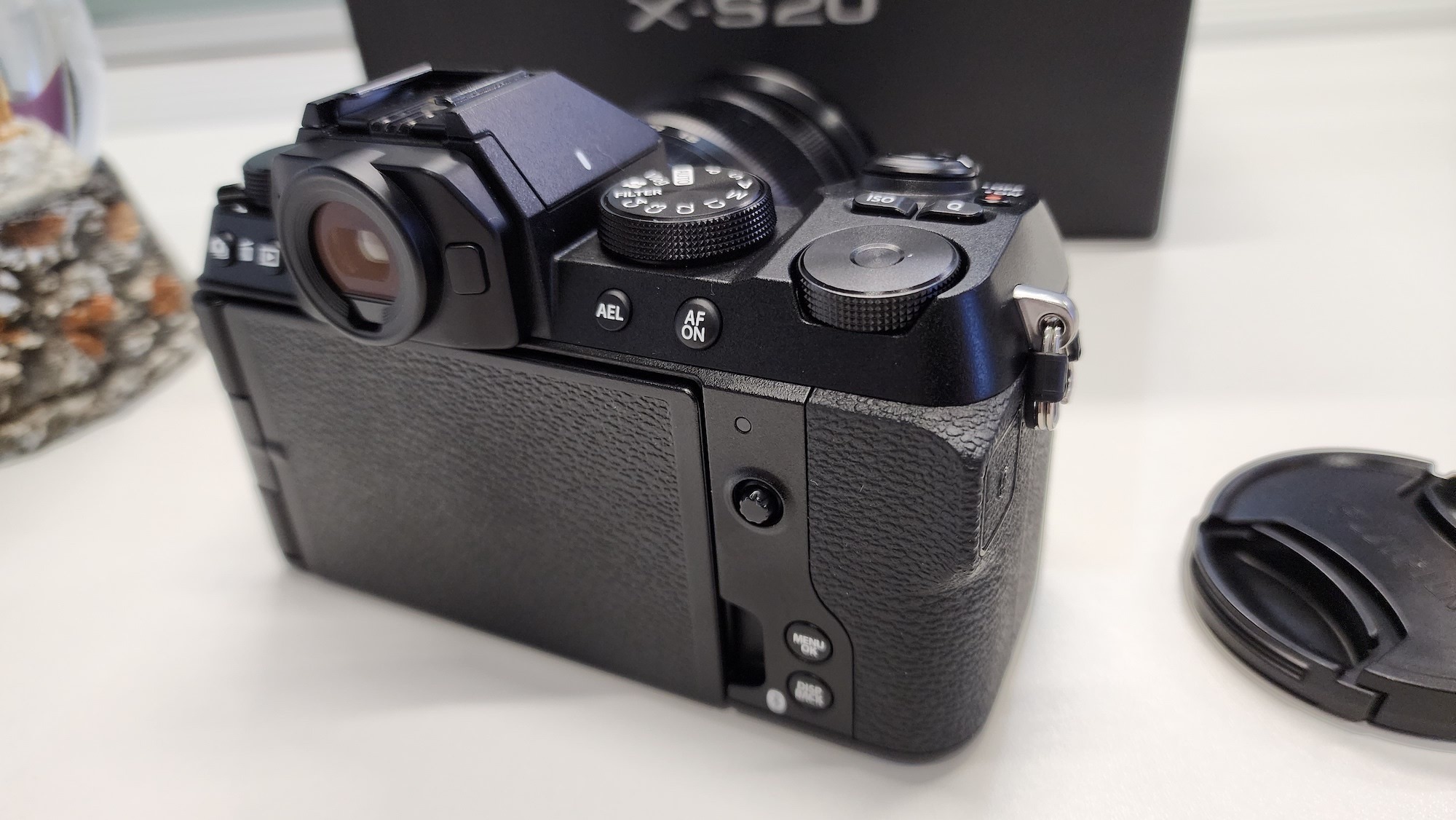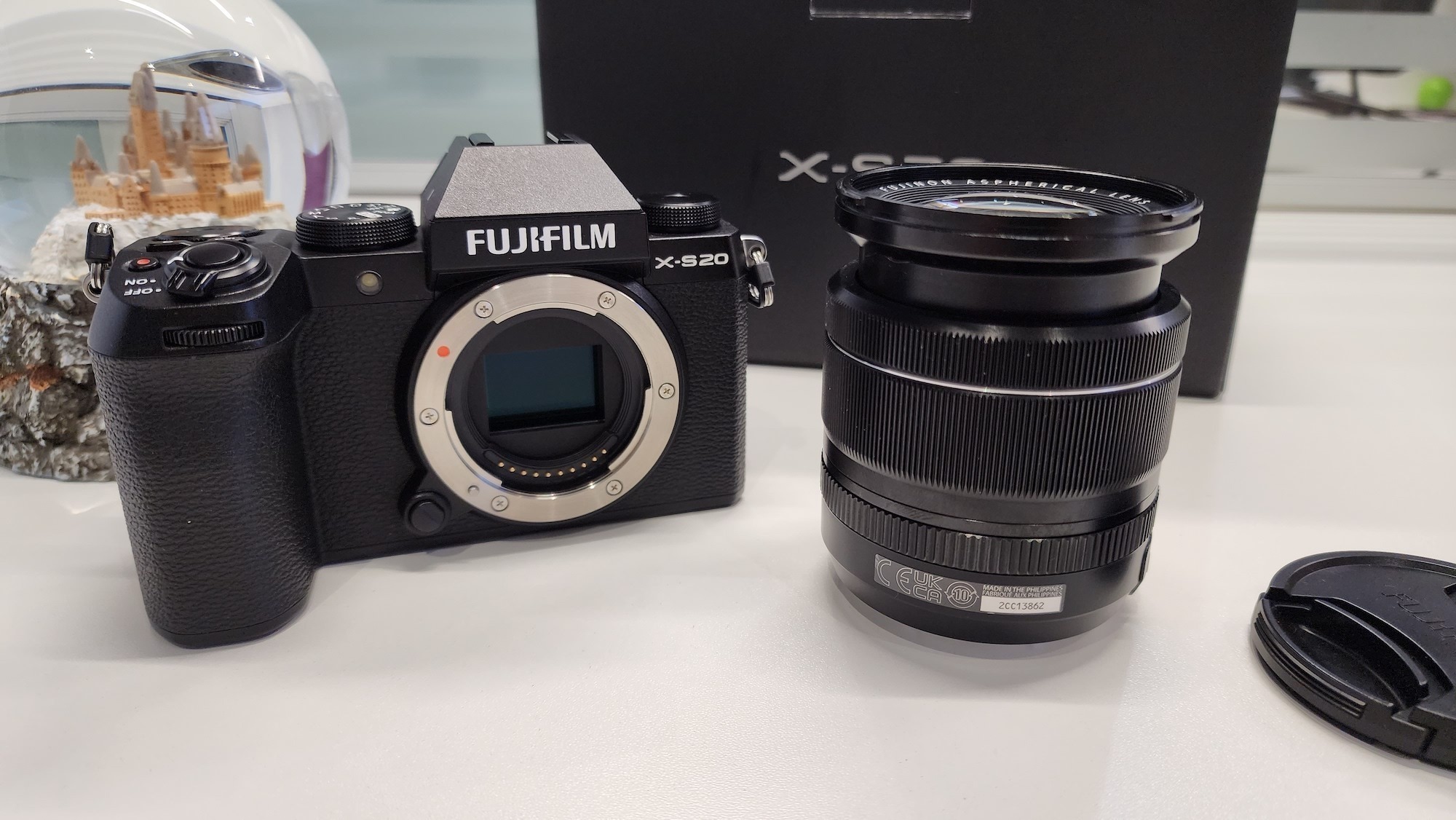Fuji's snapper is a very good upgrade on (most of) the X-S10. Battery life is better, video skills are much improved, and there's still plenty to like from a stills perspective. High-end options in a more basic frame mean that this one might escape feeling as intimidating as a full-on pro shooter might to newcomers.
-
Design
-
Features
-
Battery
-
Performance
-
Value
Fujifilm doesn’t really do snooty camera names. You’re getting a coded string of numbers and letters and you’ll like it. The new Fuji X-S20 mirrorless camera is proof of that. It’s marketed as a beginner’s big-boy camera. Given its nearly R30,000 price tag, you have to be fairly sure that the shutterbug life is for you. If you’ve made the right call, though, you’ll also find that you’ve made the right call with regard to your hardware.
This is only really a beginner’s camera in the sense that it’s less intimidating than Fuji’s really high-end kit. The pricing difference between this and the company’s X-T4 (and even the T5) isn’t large at all, though you’ll probably forgo a lens to spend the same amount of money. But you don’t have to, especially if you’re just getting into the game and are looking for something versatile.
Has the body for it
Fuji’s X-S20 sports a similar look to the X-S10, the lineup’s immediate predecessor. It’s recognisably Fujifilm’s handiwork. The black textured body and right-hand grip section are common across most of the brand’s cameras. There are just enough knobs and dials to make users feel like they’re using a ‘proper’ camera but not so many that they just stick the X-S20 into ‘Auto’ and leave it there. That’s for poseurs.
An optical viewfinder dominates the top strip but newer-school snappers also have a 3in flip-out LCD screen to play with that allows for some interesting angles. It also allows for vlogging, which is one market Fuji’s after with this camera. In fact, there’s almost no target audience left untouched here. Even serious pros will want to check this out. You don’t always need all of the manual controls to have fun with a camera, after all.
Fuji’s X-mount lenses are all compatible here but you’ll probably find yourself wielding the included 18-55mm kit lens until you get used to throwing the X-S20 around. After that, you can look at macro, pancake, and zoom options. Let’s not get ahead of ourselves.
Just keeps going…
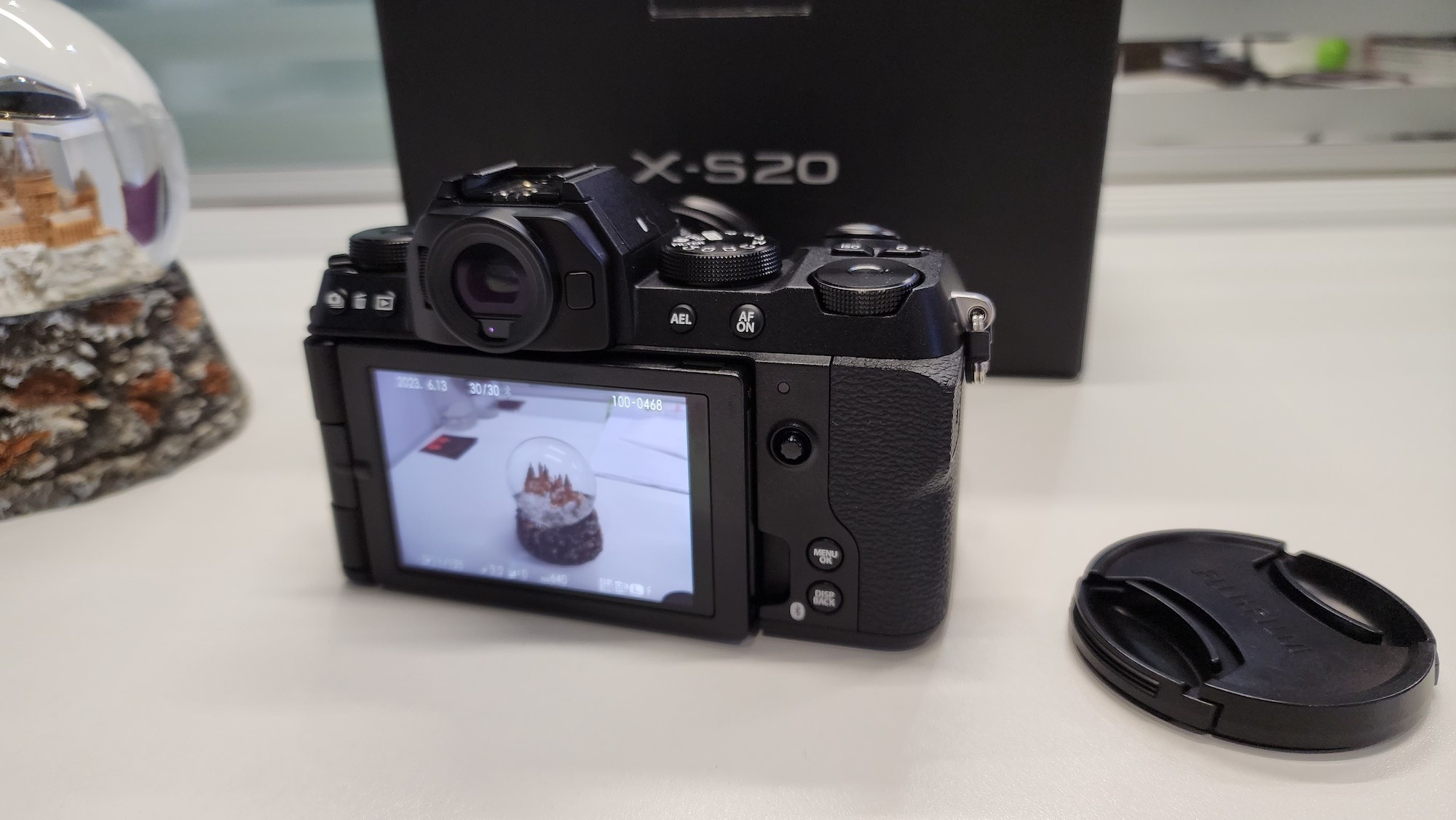 Of the claims Fuji makes about this camera, the hardest to believe might be that the company has doubled the battery life over the X-S10. As it happens, that’s completely correct. The X-S20 has cribbed the X-T5’s battery to dramatically increase your still-shot uptime. It’s still possible to punish it while shooting video — you can run down the entire battery in just under an hour-thirty if you’re shooting 6.2K video. Since this is the first Fuji to launch with a dedicated vlogging mode, that’s just what the company expects you to do. Handily, the battery can be topped up via an in-body USB-C charge port.
Of the claims Fuji makes about this camera, the hardest to believe might be that the company has doubled the battery life over the X-S10. As it happens, that’s completely correct. The X-S20 has cribbed the X-T5’s battery to dramatically increase your still-shot uptime. It’s still possible to punish it while shooting video — you can run down the entire battery in just under an hour-thirty if you’re shooting 6.2K video. Since this is the first Fuji to launch with a dedicated vlogging mode, that’s just what the company expects you to do. Handily, the battery can be topped up via an in-body USB-C charge port.
But if video is on your mind, the X-S20 does have a few points to keep in mind. Concessions have been made for external mics — there’s a headphone port on one side and a mic port on the other. The hot shoe up top lets you stack some more advanced accessories for a better overall end-product but there’s only a single UHS-II SD card slot to play with. We told you this is aimed at the most casual user, didn’t we?
Another familiar face
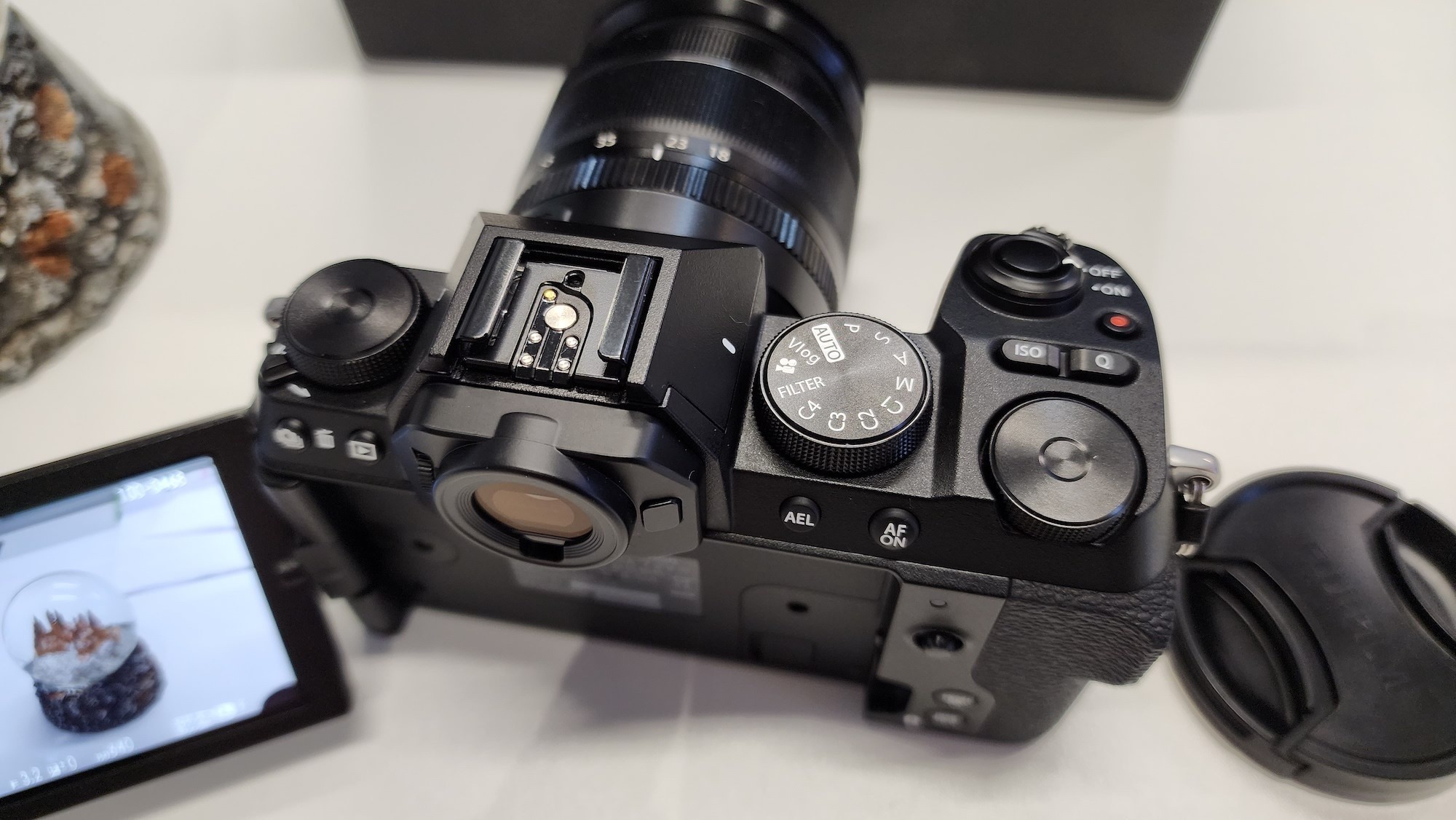 Internally, there are aspects of this camera available elsewhere. The 26.1MP X-Trans 4 sensor is the same one seen in previous Fuji cameras, including the outgoing X-S10. If you’re upgrading from the previous model, it’s worth asking if you need the improved battery and vlogging mode that much. It’s still worth making the switch, though. The X-Processor 5 engine is new and promises to perform better for users in most circumstances. It’s that whole ‘video is king’ ethos rearing its head again.
Internally, there are aspects of this camera available elsewhere. The 26.1MP X-Trans 4 sensor is the same one seen in previous Fuji cameras, including the outgoing X-S10. If you’re upgrading from the previous model, it’s worth asking if you need the improved battery and vlogging mode that much. It’s still worth making the switch, though. The X-Processor 5 engine is new and promises to perform better for users in most circumstances. It’s that whole ‘video is king’ ethos rearing its head again.
The Fujifilm X-S20 is capable of eight frames per second if you’re shooting mechanically but that ramps up to 30fps if you let the digital shutter take over (and cut down the sensor size a little). Autofocus is great, particularly with human subjects, and Fuji’s eye-tracking tech is particularly noteworthy. When it comes to stills, the X-S20 is as brilliant as the lineup ever is. Shooting in JPG+RAW gives options for post-processing as well as instant gratification while switching everything over to Auto lets the camera take over and apply the film simulation effect it thinks works best for your shot.
But it’s video performance that Fuji really wants to wow users with. Shooting with 10-bit 4:2:2, ProRes, or Blackmagic RAW are all options, if you output via HDMI to a recorder. For video content, that’s a boon. As mentioned, it’ll record up to 6.2K (but kiss your battery goodbye), but only at 30fps. Step down to 4K and you can have 60fps. Drop it lower, to HD, and you can ramp that up to 240fps. After that, your video depends on framing and imagination. There’s not much more the camera can do to help with that.
Fujifilm X-S20 verdict
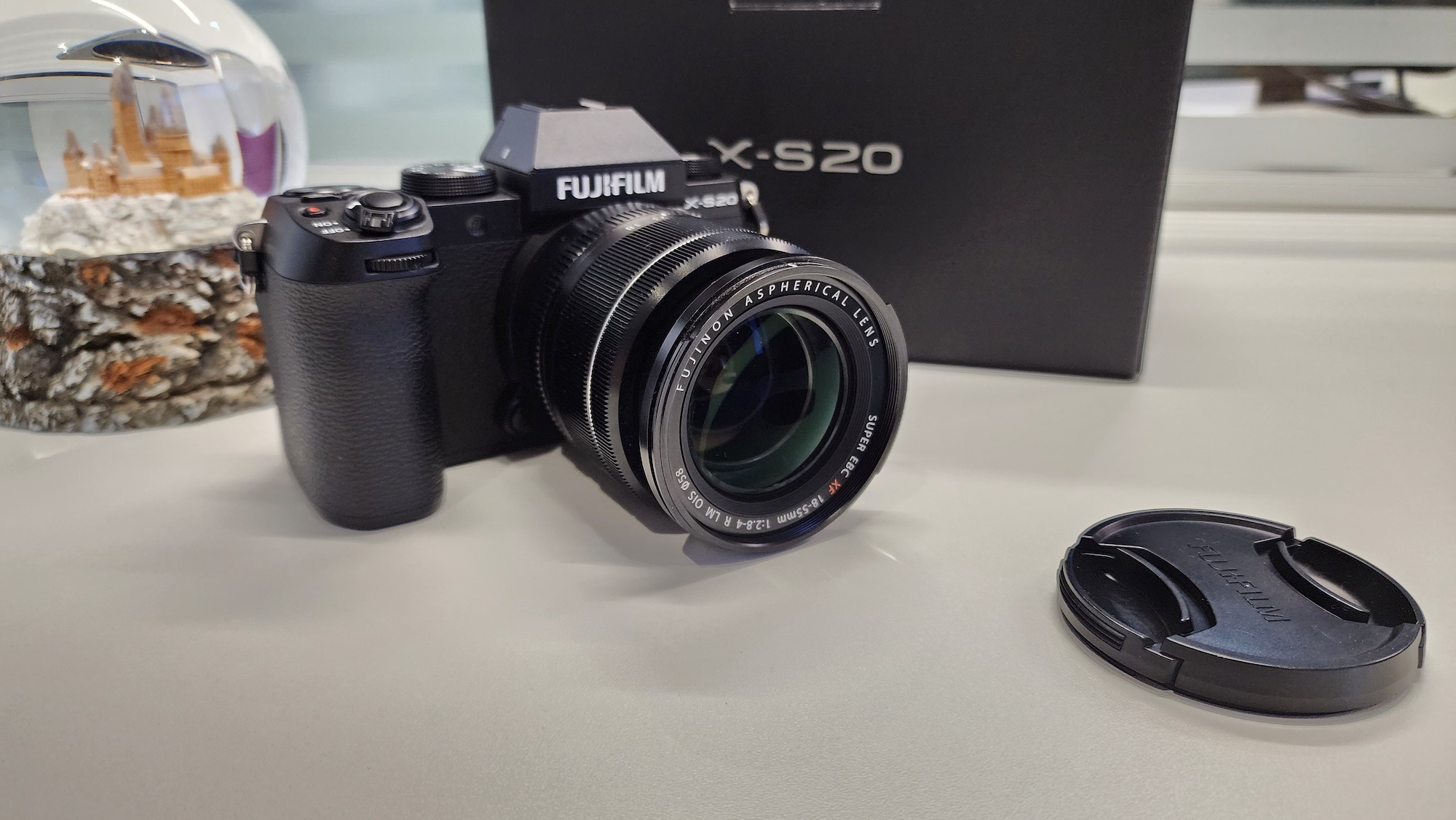 The Fujifilm X-S20 is an excellent update of the X-S10. It’s got what it takes to make stills and video photographers very happy, though the video types are getting the better part of this deal. The only real issue is its positioning. The X-S20 is angled at the more casual user, with those looking to take photography (at however many frames per second) more seriously firmly in the company’s sights. But that R28,700 price, even if it includes a kit lens, might be hard for newbies to swallow. Still, if you’re looking at making a move in the content creator space and have the post-processing skills to back it up, this is something you should include in your photography arsenal.
The Fujifilm X-S20 is an excellent update of the X-S10. It’s got what it takes to make stills and video photographers very happy, though the video types are getting the better part of this deal. The only real issue is its positioning. The X-S20 is angled at the more casual user, with those looking to take photography (at however many frames per second) more seriously firmly in the company’s sights. But that R28,700 price, even if it includes a kit lens, might be hard for newbies to swallow. Still, if you’re looking at making a move in the content creator space and have the post-processing skills to back it up, this is something you should include in your photography arsenal.

